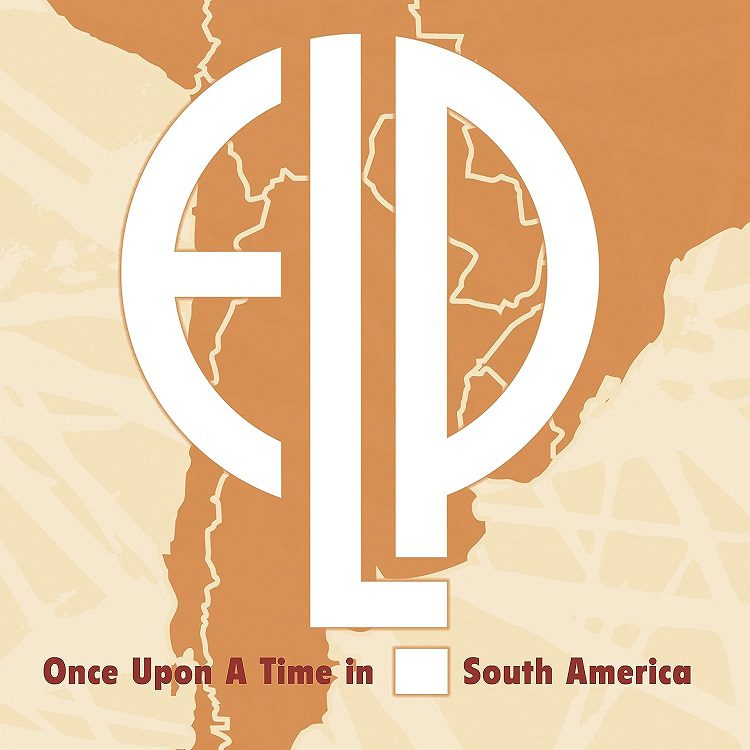
Written by Glen Boyd
Emerson Lake & Palmer (or ELP as they’ve also been often billed – including on this live recording, drawn from a series of shows in South America, two dates from a 1993 reunion tour and one from 1997) are one of those bands who have gotten kind of a bad rap over the years. Even during their 1970s heyday – when they were one of the top drawing live acts in the world, riding a string of mega-selling albums including Trilogy and Brain Salad Surgery, they were still universally despised by the rock press.
But even as the critics routinely hurled their adjectives of “pretentious” and “overblown” like daggers, ELP’s reputation for dazzling musicianship and highly theatrical live performances (Keith Emerson straddling his keyboard during the nationally televised 1974 California Jam festival comes immediately to mind here), only continued to grow.
It should be noted here, that although today it may be only a historical footnote, the question of who rated as rock’s “best keyboardist” between Keith Emerson and Yes’ Rick Wakeman, was as hotly debated at the time as the guitar-God battle raging between guys like Clapton, Beck, and Page. Carl Palmer’s name was equally a given in the yearly best drummer polls of the era. The classical-rock pyrotechnics of keyboard virtuoso Emerson and monster-drummer Palmer, were equally balanced by the softer, acoustic contributions of guitarist/bassist Greg Lake (who was also a bit of a heartthrob with the ladies).
And then it all fell apart.
Towards of the end of the 1970s, ELP made a couple of really bad decisions. The first being a tour with a full symphony orchestra for what was then considered the outrageous ticket price of $10. The orchestra musicians were sent packing about halfway through the tour. But between the mediocre Works Vol. 1 double album (which was really more like a combination of three solo albums rolled into one), and years of bad press finally catching up to them, the damage had been done. The lackluster follow-up album Love Beach pretty much nailed the coffin shut.
The reunion tour concerts documented on Once Upon a Time in South America showcase an ELP trying to pick up the pieces following more than a decade in the wilderness – a break which saw everything from prog-rock peers like Yes and Genesis enjoying massive commercial success in the 1980s, to the rise of both hip-hop and Nirvana in the 1990s.
Despite the layoff, ELP sound great here, proving that the extended time off had done nothing to diminish their considerable chops. ELP diehards will love the setlist too, including such extended prog workouts as “Tarkus,” “Fanfare For The Common Man/America/Rondo” and no less than three takes on “Pictures at an Exhibition” (ranging in length from the full 24 minutes to a relatively abridged 10-minute version).
The setlist is also scattered with album-rock fodder like “Karn Evil 9 (First Impression, Part 2)” (famous for the opening lyric “Welcome back, my friends, to the show that never ends”) and lesser played fan-favorites like “Knife Edge” and the rarely played “Pirates” (from the Works Vol. 1 set). There’s also a great-sounding version of Greg Lake’s biggest pre-ELP hit, King Crimson’s “21st Century Schizoid Man,” which finds Lake in fine vocal form.
But in true ELP fashion, too much is never enough here.
On Once Upon a Time in South America, the entire setlist is repeated twice unnecessarily from Discs 1 through 3 (save for the minor switch-up of Lake’s “Still You Turn Me On” for “From the Beginning”). ELP were always that band whose only real missing piece was that one impartial producer to reel in the excesses.
With Carl Palmer now the sole surviving member, Once Upon a Time in South America represents not only a document of a once great band on the comeback trail, but a tantalizing tease of what might have been, given a few different twists and turns.
R.I.P. Keith Emerson and Greg Lake.